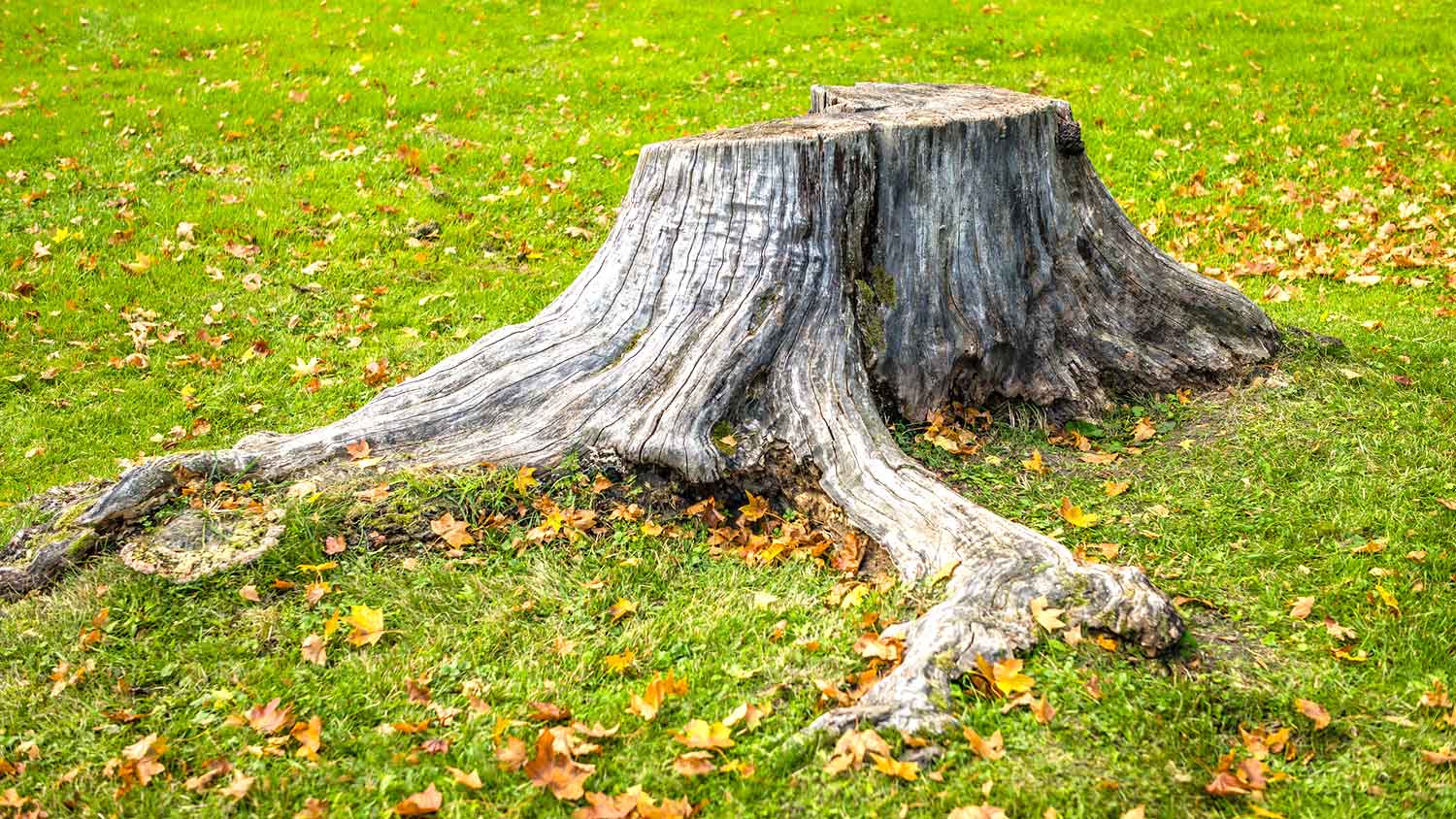
Tree inspections can ensure your trees stay healthy and safe, preventing costly damage. Learn how much tree inspections cost and what can affect the price.
Chop it like it’s hot, but some tree roots still won’t quit


Some tree species can regrow roots after being cut, while others cannot.
Root regrowth depends on tree type, age, and how the roots were cut.
Cutting large or a significant amount of roots can damage tree health and stability.
Chemical treatments and root barriers can help prevent regrowth.
Are your tree roots interfering with your home's foundation, sidewalk, or yard? There's a good chance they might grow back, even if you cut them. Some trees continue growing by sending out new shoots, even after their roots are severed. If you want to stop tree roots from growing back, here's what you need to know.

Even after a tree has been cut down and its stump has been removed, some tree roots will continue to grow, depending on the species of tree. Willows, poplars, elms and specific oak trees vigorously sprout, meaning they produce new shoots from their root systems, which are extensive, even after they’ve been cut.
Some roots may continue growing, eventually creating a new tree. Others that sprout or leave to photosynthesize will eventually die, but it may take years before that happens. Root depth and size of the can impact regrowth potential.
Other factors that impact root growth include the health of the tree, as strong trees have a greater chance of regenerating, cut location (roots close to the trunk have a greater chance of regrowth than those further out), and soil conditions.
If you want to keep the tree, when removing its roots, make sure to take some necessary precautions to keep yourself, your home, and the tree safe. Cut roots only when necessary, avoiding those that support the tree. Use sharp, clean tools to prevent unnecessary damage—and apply pruning sealers only if recommended for the species. Once you’ve finished, keep an eye on the tree for any signs of stress, such as wilting or scorching leaves.
If you’re not keeping the tree, you can hire a tree removal service to knock down the tree, followed by a stump removal company in your area to grind the stump. Grinding will help expedite the roots’ decay; however, this natural process can take years. You can also try other methods, such as digging out the roots, using chemical herbicides, or epson salts (or salt and boiling water). This method requires several applications over a few months’ time.
To prevent or manage root regrowth, install root barriers to direct future growth away from structures, and when replanting, replace any problematic trees with a non-invasive species.
From average costs to expert advice, get all the answers you need to get your job done.

Tree inspections can ensure your trees stay healthy and safe, preventing costly damage. Learn how much tree inspections cost and what can affect the price.

The cost to remove palm trees depends on several factors, including their size, location, and more. Our guide shows the average palm tree removal costs.

Get a clear estimate of palm tree maintenance cost, including trimming, fertilization, and pest control, so you can keep your palms healthy and your budget on track.

Know what signs to look out for to identify and treat palm tree diseases with our expert guide to the signs, symptoms, and prevention of palm tree diseases.

You don’t have to be a certified arborist to know how to properly stake trees. Use our guide to help provide support to growing roots and vulnerable limbs.

While palm trees don’t need much maintenance, they occasionally require trimming to keep them healthy. Learn how to trim a palm tree.